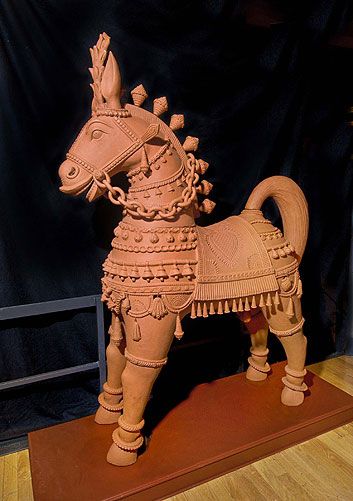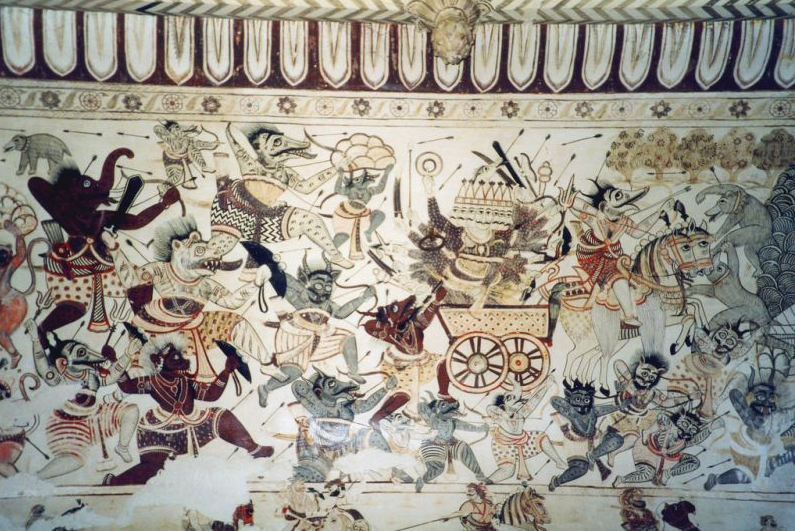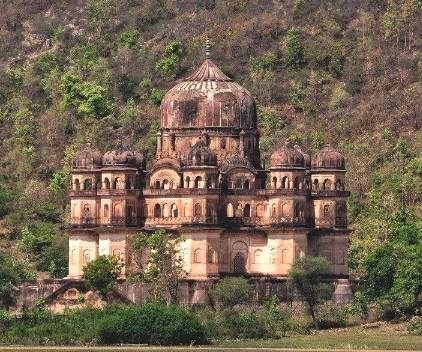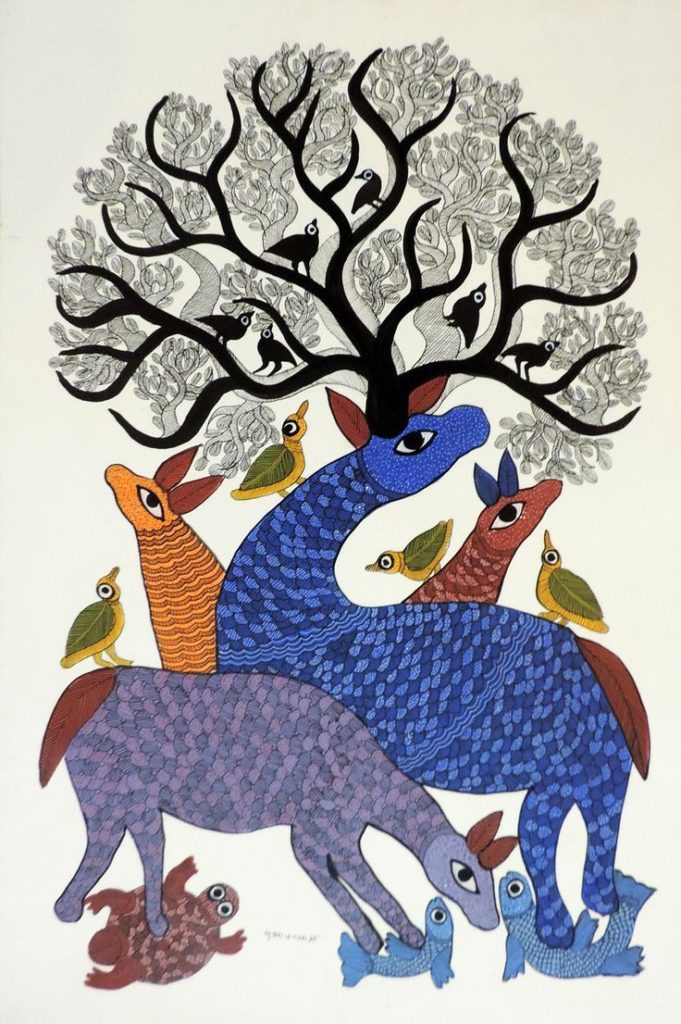The vast forested areas of Madhya Pradesh, particularly its eastern parts boost abundant bamboo groves. Two indigenous communities, the Basods and the Nistaris, make out a living from the bamboo cultivation and processing. In create addition to creating tools of every day life, artisans cum farmers from the Basod, Baiga, Korku and Gond tribes transform bamboo, cane, chhind and sheeshal into beautiful ethnic products that appeal to urban sensibilities – table lamps, furniture, kitchen objects, laptop bags and baskets.
A peacock motif on textile printing from Gwalior, a city famous for its fabric art.
For the indigenous tribes of Madhya Pradesh, art is an integral part of life. Folk paintings from Bundelkhand, Gondwana, Nimar and Malwa are not merely decorative, but are an expression of the social cultural and spiritual identity of the communities. From the extensive tattoos on the bodies of Baiga tribeswomen to wall murals in the homes of the Mandanas, folk art in Madhya Pradesh is immense and astounding in its complexity and breath.
The art of the gonds who inhabit central Madhya Pradesh, celebrates the wonder of nature and the magical inter connectedness of all things of humans with birds, animals and trees. The flat, two dimensional paintings which are made on paper with ink and acrylic paint use the language of lines, dots and waves, luminous colours and surreal imagery to convey myths and legends. This art form developed further under the patronage of well-known artist Jagdish Swaminathan and the Gond paintings have adapted to suit contemporary taste and have become a meaningful way to preserve the heritage and livelihood of this community.
Diverse metal craft traditions handed down through generations have flourished here – the axis stretched across Tikamgarh, Betul, Bastar, Sarguja and Raigarh in undivided Madhya Pradesh. What’s common between regional variations is the use of the ancient method of cire perdue or “lost wax casting”, a form of metal casting where molten metal is poured into a mould created from wax. In Betul, 175 km from Bhopal, this process has been mastered by the Bharewa tribe to make intricate metal sculptures imbued with folklore and religion, possessing ritualistic, itilitarian and artistic appeal. The cusrios take the form of whimsical horses, birds, animals figurines, tribal gods, traditional amps, bugles, spears, anklets and sculptures showcasing local deities such as Sitalamata, Kalikankalin, Mahadeo and Birabai.





